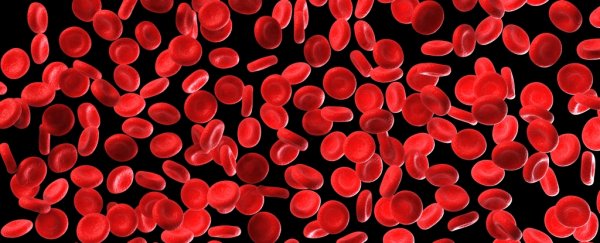Why does long COVID last for so long, leaving long-haulers with symptoms that persist for months after initial infection?
New evidence suggests the enduring imprint of COVID-19 could be due to the virus making significant alterations to people's blood – yielding lasting changes to blood cells that are still evident several months after infection is diagnosed.
"We were able to detect clear and long-lasting changes in the cells – both during an acute infection and even afterwards," explains biophysicist Jochen Guck from the Max Planck Institute for the Science of Light in Germany.
In a new study, Guck and fellow researchers analyzed patients' blood using a system developed in-house, called real-time deformability cytometry (RT-DC), which is capable of rapidly analyzing hundreds of blood cells per second, detecting if they exhibit abnormal changes in their size and structure.
The technology is relatively recent, but it could go a long way in exploring what remains a significant unknown in COVID-19 science: how the coronavirus may impact blood at the cellular level.
"While the pathology is not yet fully understood, hyper-inflammatory response and coagulation disorders leading to congestions of microvessels are considered to be key drivers of the still increasing death toll," the researchers, led by first author Markéta Kubánková, write in their paper.
"Until now, physical changes of blood cells have not been considered to play a role in COVID-19 related vascular occlusion and organ damage."
In the study, the researchers analyzed blood from 55 individuals: 17 patients with severe COVID-19 (half of whom later sadly died), 14 recovered patients, and 24 healthy volunteers who showed no sign of having had the disease.
In total, over 4 million blood cells taken from these people were run through the RT-DC system, being microscopically analyzed as they flowed through a narrow channel in the device.
The results showed that red blood cells (erythrocytes) in COVID-19 patients varied more in size than those from healthy people, and showed signs of stiffness in their physical structure, exhibiting less deformability, which could affect their ability to deliver oxygen through the body.
"The physical properties of erythrocytes are crucial for microcirculatory flow and as such, these changes could impair circulation and promote hypoxemia," the researchers explain.
"The effect could persist in COVID-19 patients long after the infection is not active anymore; we found that in recovered patients phenotype alterations were not as prominent, but still present."
In contrast, the researchers discovered that a form of white blood cells (leukocytes) called lymphocytes showed decreased stiffness in COVID-19 patients, while other white blood cells, known as monocytes, were significantly larger than in cells from the control group.
Meanwhile, neutrophils – another type of white blood cell – showed numerous changes in COVID-19 patients, seen in higher volume, with greater deformation.
Interestingly, neutrophils have a particularly short lifespan (of only about one day), but the neutrophil changes in COVID-19 patients could still be seen months after infection, a result Kubánková describes as "totally unexpected" – and yet more evidence of COVID-19 infection likely leaving a lasting influence on the immune system.
"While some of these changes recovered to normal values after hospitalization, others persisted for months after hospital discharge, evidencing the long-term imprint of COVID-19 on the body," the researchers write.
"We hypothesize that the observed changes could arise due to cytoskeletal alterations of immune cells. Mechanical properties of cells can be directly related to the cytoskeleton, an important supportive structure which also determines cellular function."
It remains to be seen how these blood cell changes may ultimately be triggered by viral infection, and it's not yet fully known how the cell alterations lead to COVID-19 symptoms, and sometimes to death.
For now, it's just more evidence for how deeply this virus invades our bodies – and why it sometimes won't let people go.
"The persistent alterations of erythrocytes and neutrophils could be connected with long term symptoms of the recovered patients, of which 70 percent described chronic headache or neurological symptoms, 54 percent had concentration disorders and 62 percent circulatory problems like cold sweat and tachycardia," the authors write.
"We hypothesize that the persisting changes of blood cell physical phenotypes could contribute to the long-term impairment of circulation and oxygen delivery linked with COVID-19."
The findings are reported in Biophysical Journal.
